Space
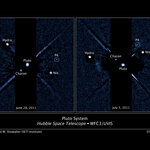
Though 2 percent of astronomers declared Pluto was no longer a planet, for not being a planet, it sure has a lot of moons. Four so far.
The Hubble Space Telescope discovered this fourth moon, cleverly designated P4, and astronomers say this newest, smallest one has an estimated diameter of 8 to 21 miles. By comparison, Charon, Pluto's largest moon, is 648 miles (1,043 km) across, and the other moons, Nix and Hydra, are in the range of 20 to 70 miles in diameter (32 to 113 km).
Distance: 3 billion miles.
The finding is interesting given NASA's New Horizons mission, scheduled to…
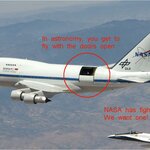
Last month, Pluto passed in front of a star and cast a small shadow on the Earth - astronomers from Lowell Observatory were among the scientists and crew who observed the rare occultation event from NASA's newest airborne observatory, SOFIA (Stratospheric Observatory for Infrared Astronomy).
SOFIA has a 100-inch (2.5-meter) telescope aboard a modified 747 SP aircraft, and can fly at an altitude of 45,000 ft., above most of the cloud cover and water vapor in the Earth's atmosphere.
The June 23rd Pluto occultation was observed using HIPO, the High-speed Imaging Photometer for…
Fact #1: There will be a solar event in the next five years that wipes out the electrical grid for the US.
Fact #2: Solar and space weather prediction is about as accurate as hurricane predictions-- lots of maybes and false warnings, but great after-disaster analysis.
Fact #3: It's hard to educate and convince at the same time, and the public doesn't know what space weather is, yet.
Query: Are we doomed?
In Solar Cosmic Katrina and Chicken Little, we find out that:
Congresswoman Clarke at the Space Weather Enterprise Forum noted that
“the likelihood of a geomagnetic storm that will disrupt…
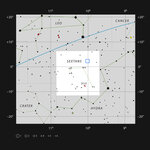
There were concerns among people who don't understand physics that the LHC might create a black hole and swallow the Earth. Obviously in an infinite Universe anything can happen but the precautionary principle taken to such extremes is really only used by groups like anti-environment crusaders, pro-environment crusaders and also anti-vaccine people, etc. In reality, the energy couldn't kill a fly (see Shut Down The LHC? I'd Rather Not Hurt A Fly).
But a supermassive black hole can obviously be activated, even if it can't be done on Earth. And it doesn't require…
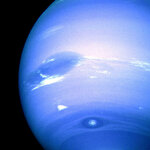
Tomorrow, that is. On July 12th, 2011, Neptune will have completed exactly one orbit around the Sun since it was discovered on September 23rd, 1846. So,
Happy Birthday, Neptune
I'm always a bit disappointed with myself when I find out that there's been a space mission that I didn't know about. But I was really annoyed with myself for not keeping up with MESSENGER (a slightly tenuous acronym standing for MErcury Surface, Space ENvironment, GEochemistry, and Ranging), because its findings have been really quite impressive and surprising.
So, before discussing one of the more recent findings, reported in a paper published this week, lets get acquainted with MESSENGER, who has been slaving away in a rather inhospitable corner of the solar system for over 3 months now.…
"To her who appears in the skyto her who appears in the skyI want to address my greetingto the hierodule who appears in the skyI want to address my greetingto the great queen of heaven, Inanna [ancient Sumerian name for Venus]I want to address my greetingto her who fills the sky with her pure blazeto the luminous oneto Inannaas bright as the sunto the great queen of heaven."
An ancient Sumerian hymn to Venus, written by priests
Venus' relationship with the inhabitants of her neighbour has been divided throughout human history. Some have worshipped it, others have feared it - many have done…

Looking back at over 2 years of writing, this column has covered a lot of ground. Here's a topical index as proof.
Topical Index (from Feb 2009, current to June 15th, 2011)
Science Fiction Meets Science
Sex On Mars Oct 22 2010 - 3:00am
The Star Trek Computer is Stupid
The State Of Sci-Fi Gaming Dec 22 2009 - 3:56pm
Movie Science vs Real Science Feb 16 2010 - 8:33pm
Balloon Science in "Up" Jun 16 2009 - 11:03am
What Time Travel Looks Like Jul 7 2009 - 9:47am
Quenching the Sun, For Fun Aug 21 2009 - 2:51pm
Astronomy
NASA Xmas Presents To You Dec 24 2010 - 5:25pm
Interested In…
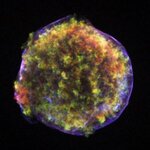
According to an astrophysicist at UC Santa Barbara, 'zombie' stars may be a way to measure dark energy. Type Ia supernovae are stars that have been observed since 1054 A.D., when an exploding star formed the crab nebula, a supernova remnant.
Theoretical dark energy should make up about three-fourths of the universe, says Andy Howell, adjunct professor of physics at UCSB and staff scientist at Las Cumbres Observatory Global Telescope (LCOGT).
"We only discovered this about 20 years ago by using Type Ia supernovae, thermonuclear supernovae, as standard or 'calibrated' candles," said…
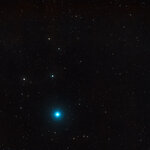
A quasar named
ULAS J1120+0641, powered by a black hole with a mass two billion times that of the Sun, is by far the brightest object yet discovered in the early Universe - yet.
Quasars are very bright, distant galaxies that are believed to be powered by supermassive black holes at their centers. Their brilliance allows us to try and understand the era when the first stars and galaxies were forming. The newly discovered quasar is so far away that its light probes the last part of the reionization era [1]. ULAS J1120+0641, so named because it was found using data from the UKIDSS…